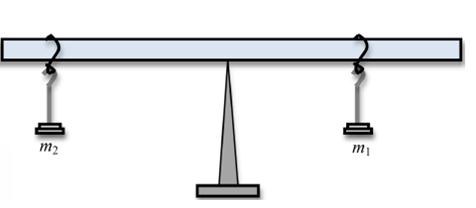

It shouldn’t be too close to the last hole you made. Pierce them through another point along the shape’s edge.
Torque equilibrium and center of gravity lab report free#
Pierce the pin anywhere along the edge of the shape, so that your shape is free to swing/rotate. If using chalk, cover the string with chalk.This is your plumb line: it follows the direction of the gravitational pull. Attach a small weight to the end of your string.Pre-cut templates or photocopy irregular shape templates onto cardstock. What does it mean to say that something is “balanced”? Is the centre of gravity exactly in the middle (geometric centre) of the shape? How can you check that you have correctly found your shape’s centre of gravity? What does the spot where your lines intersect represent? Why do we have to draw several lines from different points? Use the force of gravity to deduce the centre of gravity for various shapes.Ĥ cardstock shapes, either pre-cut or printed for students to cut out (see shape card templates)Ī chalk or pen (colour should contrast the shapes’ colour)Ī small weight to hang from the string (e.g. If it were leaning more, it would topple over since the plumb line would fall outside the base.Įxamine the concept of the centre of gravity. This is why the Leaning Tower of Pisa does not topple over: its centre of gravity is still above its base when a plumb line is drawn. If the plumb line falls outside of the base of support, the object will topple over. To answer a brainteaser on whether or not an object will topple over, students can draw a plumb line between the object's centre of gravity and its base. you can balance the shape by placing your finger under the centre of gravity.Īn object will topple over once its centre of gravity falls outside its base of support.when you pin your shape through its centre of gravity it is stable and balanced.You have correctly marked the shape's centre of gravity if: When students hang the shape from several different points they see that the plumb line always passes through the same spot.

The intersection of the two plumb lines is the object's centre of gravity. This is why we hang the shape at a different point and draw another line along the plumb line. The problem is that one line is not sufficient to pinpoint the exact centre of gravity of the shape (it could be anywhere along this line). Hanging the shape at any point will cause the shape to rotate until its centre of gravity lines up directly below the hanging point.ĭrawing a line along the plumb line enables us to see the vertical line between the hanging point and the centre of the earth. In this activity, a plumb line (a weighted string) is created in order to visualize the vertical gravitational pull towards the Earth. An object hanging from any point will automatically rotate so that its centre of gravity is along this vertical line from the hanging point. Since the weight of an object is concentrated in its centre of gravity, the force of gravity passes through this point in a vertical line towards the Earth.

In this activity, students use the force of gravity to deduce the centre of gravity for various shapes. Finding the centre of gravity of an irregularly-shaped object is trickier than for a ruler or other regular shape.


 0 kommentar(er)
0 kommentar(er)
